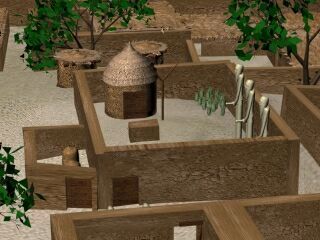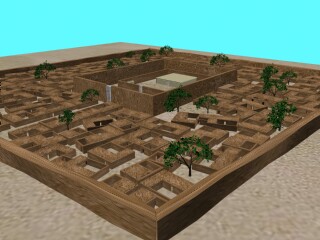| Hemamieh Question - Function: are these huts for humans or for animals? |
|
| Naqada Question - early Egyptian urbanism: is Egypt 3300 BC already an urban civilization? |
|
| Tarkhan Question - Colour in architecture: were the great tombs monochrome or polychrome? |
|
| Meydum Question - pyramid power: does a single site reconstruction convey the impact of the first pyramid? |
|
 |
Koptos - the predynastic temple Question - different options: was the early temple at Koptos closed or open in conception? |
 |
Koptos - the ancient Egyptian temple 1600 BC Question - different pasts: what was built in 1600 BC at Koptos, a whole new temple or some small chapels? |
| Qau Question - landscape of the largest rock-cut tombs: does VRML convey the impact of the Qau tombs within their specific landscape? |
|
| Some Theban temples Question - change over time: do the changes in the built environment come across clearly on the sequence of views of the site as it may have looked in each period? |
|
| Amarna (schematic diagram) Question - Do you agree with the theory on the significance of the location of the temples in relation to the figures on the stela? |
|
| Gurob Question - Virtual Reality without evidence: should reconstructions be made where an ancient site offers next to no evidence? |
|
| Palace of Apries at Memphis Question - impact of scale: the gateway blocks from Memphis belong to one of the finest ancient gateways - is this captured on the VRML model, or is the gateway in its different possible locations dwarfed by the Memphis palace? |
|
| Saqqara Question - Do 3D models create a bias towards built environment against natural environment? |
|
| Oxyrhynchus Question - One aim of this model is to reveal the extent to which Egypt became integrated into the Greek and Roman world. Does this model bring home to you the Hellenization of Egypt? better than other media? |
|
| Scenas Mandras (Shurafa) Question - Is the variety in the religious buildings enough to indicate the long lifespan of the town? |
|
| Fustat Question - How realistic is the description of 14 storey high buildings? |